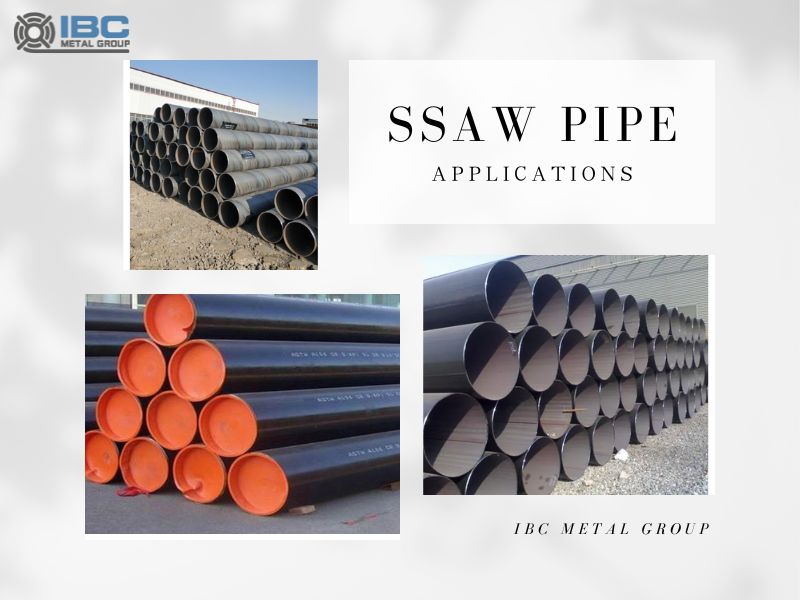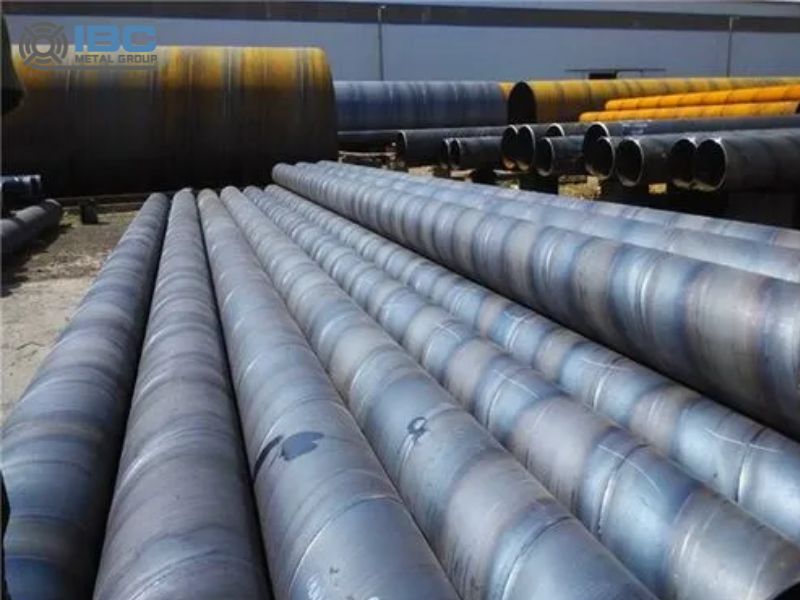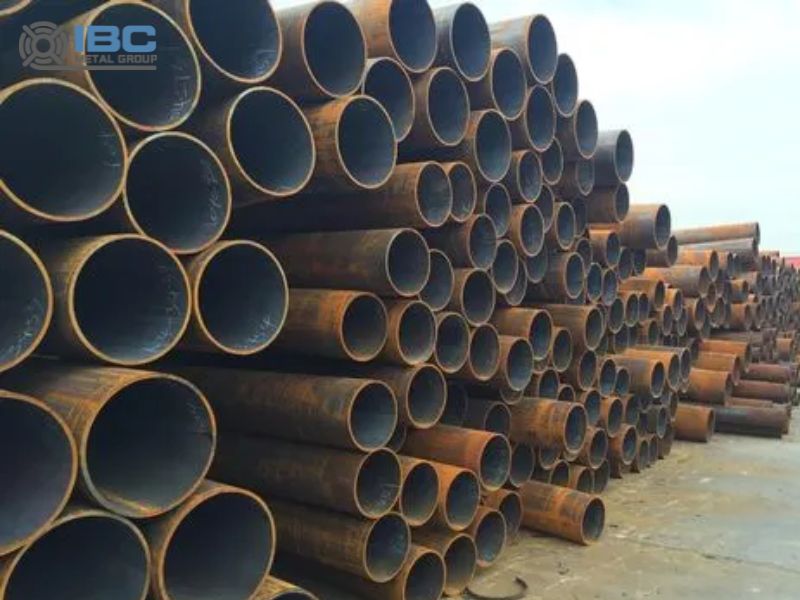The strength of SSAW steel pipe is usually higher than that of straight welded pipe. Moreover, the factory can use the narrower billet to produce welded pipes with larger diameters. And ithe workers can also use the same width billet to produce welded pipes with different diameters.

Technological Process 1
Raw materials: Select the required strip coil as raw materials, and prepare welding materials such as welding wire and flux. These raw materials need to go through strict physical and chemical inspection before being put into production to ensure quality.
Strip treatment: Before forming, the strip needs to be levelled, trimmed, planed and cleaned. This can ensure the surface of the strip is smooth and free of impurities. It provides a good foundation for subsequent welding and forming.
Head and tail butt and welding: the treated strip steel head and tail butt, using a single wire or double wire submerged arc welding process for welding. After being rolled into the steel pipe, it is also necessary to use automatic submerged arc welding to repair welding. It can ensure the continuity and quality of the weld.
Weld gap control: Through the weld gap control device, to ensure that the weld gap meets the welding requirements. At the same time, the diameter of the pipe, the amount of the wrong side and the weld gap are strictly controlled. It can ensure the molding accuracy and welding quality of the steel pipe.

Technological Process 2
Online detection and adjustment: The welded seam will be inspected by online continuous ultrasonic automatic damage instrument to achieve non-destructive testing of spiral welds. If there are defects, the equipment will automatically alarm and spray marks. And the production workers can adjust the process parameters accordingly to eliminate the defects in time.
Forming and post-treatment: After welding and testing, the steel pipe enters the forming stage. External control or internal control roll forming technology is used to make the steel pipe reach the desired shape and size. After that, the steel pipe will undergo the necessary post-treatment, such as cutting, grinding, etc., to meet the final product requirements.
Quality inspection and first inspection system: Each batch of steel pipe needs to undergo strict quality inspection during the production process. In particular, after cutting into a single steel pipe, the system will be inspected for the first time. Workers will check the mechanical properties of the weld, chemical composition, fusion state and the surface quality of the steel pipe. Only after non-destructive testing is passed to ensure that the pipe making process is qualified, the steel pipe can be formally put into production.

Applications of SSAW Steel Pipe
Oil and gas field: This steel pipe is often used in oil and gas pipelines because of its excellent strength and corrosion resistance. It can withstand high pressure and harsh environment to ensure the stable and safe transmission of resources.
Water conservancy projects: In water conservancy projects, SSAW steel pipe is used as water pipelines, especially in large water conservancy projects. And its excellent strength and sealing performance ensure the effective transportation of water resources.
Chemical industry: In the chemical industry, its corrosion resistance makes it ideal for handling various chemical substances. It can operate stably in different chemical environments, ensuring the continuity and safety of the production process.
Power industry: In the power industry, this steel pipe is used to transport steam, hot water and other media. And its high strength and good sealing can meet the high requirements of power facilities for pipeline performance.
Urban construction and agricultural irrigation: In urban construction, the steel pipes are used for water supply and drainage systems. When in agricultural irrigation, it is used as a water pipeline to provide a stable water source for farmland.

Contact with us today!



